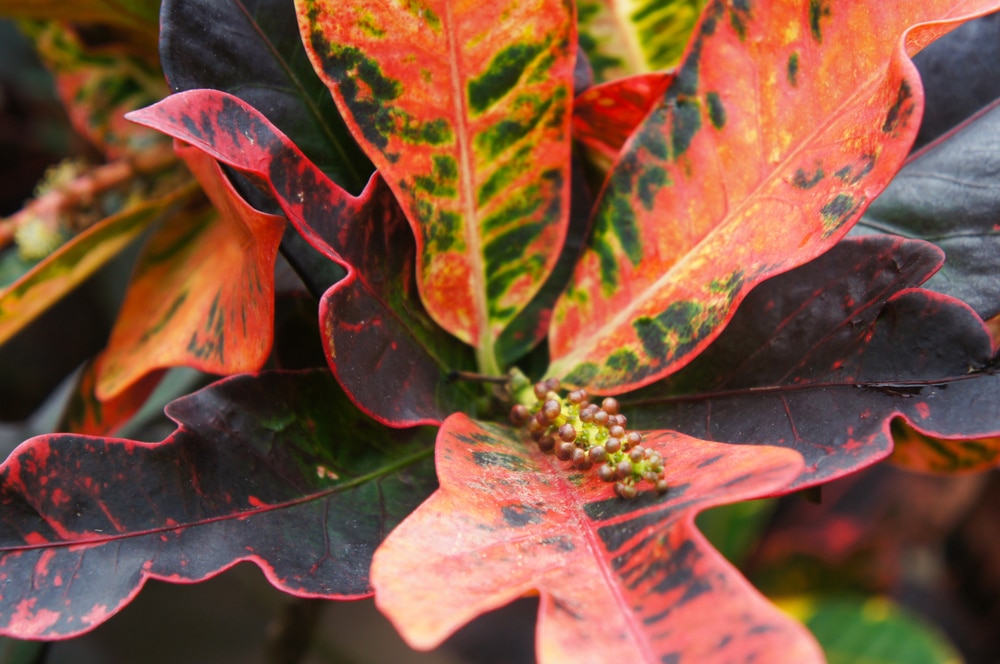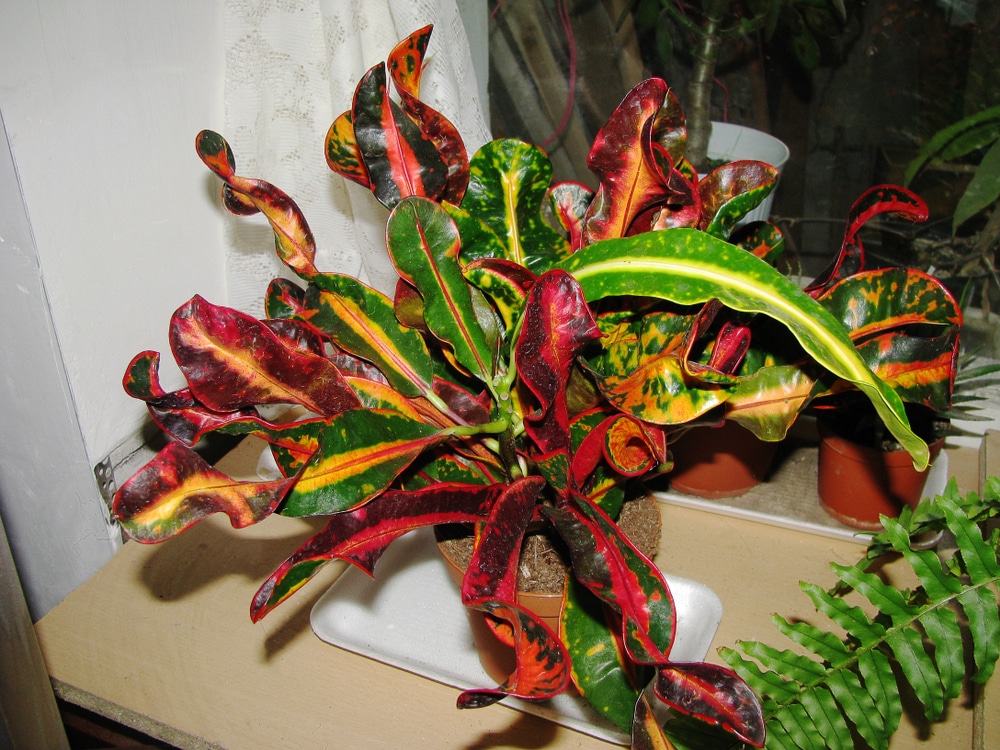Are you looking for a colorful and attractive houseplant that can spice up your interiors? Well, you might have found your perfect plant! The Croton Mammy is a stunning tropical plant native to South East Asia and some Pacific islands with eye-catching and colorful foliage that will add a touch of beauty no matter where you place it.
Despite its sophisticated looks, this plant is relatively easy to grow. Also, its shiny and evergreen leaves will provide you with year-round beauty. But if you want to learn more about Croton Mammy, read on! We collected all you must know about this plant in this essential guide.

| Botanical Name | Codiaeum variegatum “Mammy” |
| Common Name | Croton Mammy |
| Plant Type | Perennial |
| Flower Color | Croton Mammy produces flowers that are generally not visible: they are yellow and star-shaped and grow in clusters under the lush foliage. |
| Size When Mature | Up to 42 inches tall. Under ideal conditions, these plants will spread up to 2 feet wide. |
| Bloom Time | Fall |
| Sun Requirements | Bright but indirect light or partial shade |
| USDA Hardiness Zones | 11-12 |
| Soil PH Range | Between 4.5 and 6.5 |
| Soil Type | Well-draining, moist, fertile, and slightly acidic |
| Water Needs | Medium |
| Native Area | South East Asia and Pacific Islands |
What you Need to Know About Croton Mammy
The main attractivity of a Croton Mammy is its foliage: with its shiny leaves that twist and turn into vibrant shapes, this plant is a fun addition to any location. As you may expect from a tropical plant, a Croton Mammy performs bests at warm temperatures making it an excellent houseplant. But, of course, you may be able to grow it outdoors (as long as you live in a suitable USDA hardiness zone).
Be careful when growing this plant if you have pets: croton mammy is highly toxic. Ingesting any part of the plant can cause vomiting, diarrhea, and even skin irritations in humans. So, prevent your animals (or even curious kids) from spending too much time around this plant.
How to Care for Croton Mammy
Saying that a plant is low-maintenance doesn’t mean you won’t have to take care of it. But, don’t worry: we collected everything you need to know about caring for a thriving croton mammy in this essential guide.
Light
One of the most tricky things about growing crotons is picking a suitable spot for them. Lighting is crucial, but you shouldn’t expose them to too much direct sunlight, as it might burn your plant’s leaves. And too little might cause leggy growth and discoloration.
Consider placing your houseplant next to a south or west-facing window for best results. Apply some shears to prevent sunburn. Also, don’t forget to rotate your plant to ensure it grows evenly on all sides.
Water and Soil Needs
Since a Croton Mammy does well in moist environments, you must choose a well-draining potting mix to avoid overwatering it. The substrate must never dry completely, but don’t leave it soggy either: these plants are susceptible to rotting.
While crotons can survive in most soil conditions, we recommend you select a fertile mixture with peat or perlite for better drainage. Also, pH levels between 4.5 and 6.5 are preferable.
Feel the soil with your fingers before adding extra moisture to prevent overwatering issues. The water must run out of the drainage holes in your pot.
Temperature Requirements
You can grow your plant outdoors in USDA hardiness zones between 11 and 12. But avoid exposing it to temperatures below 55°F: they will kill your Croton Mammy. As a houseplant, your croton will perform well in a root with stable conditions. Keep the temperatures between 60 and 70°F for best results.
Also, avoid exposing it to sudden cold snaps and drafty windows: your plant won’t survive them. Consider increasing humidity in your home by misting its leaves at least once a week. You can also apply a pebble tray or install a humidifier to keep levels at about 40 to 50%,
Fertilizer
Add extra nutrients to your Croton Mammy to boost its growth. Do so three times a year: in the spring, summer, and fall. Suspend application in the winter, when your plant won’t need as many nutrients. For best results, use a liquid fertilizer high in nitrogen and potassium. Follow the instructions you’ll find on the label to prevent burning.
Common Diseases
Overwatering or inadequate lighting are the most common issues with Croton mammy plants. Follow our tips to prevent these problems. Also, keep an eye on pests: mealybugs and spider mites won’t think twice about attacking your plant. Eliminate them using neem oil as soon as you notice their presence to prevent an infestation.

